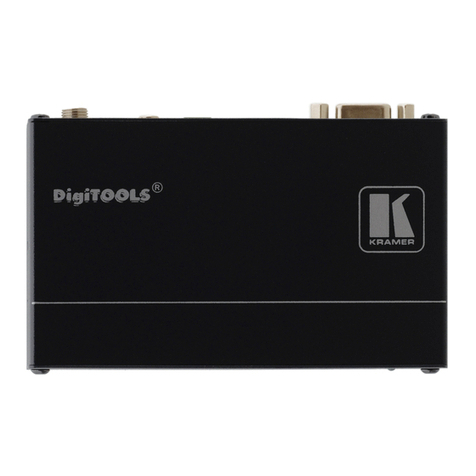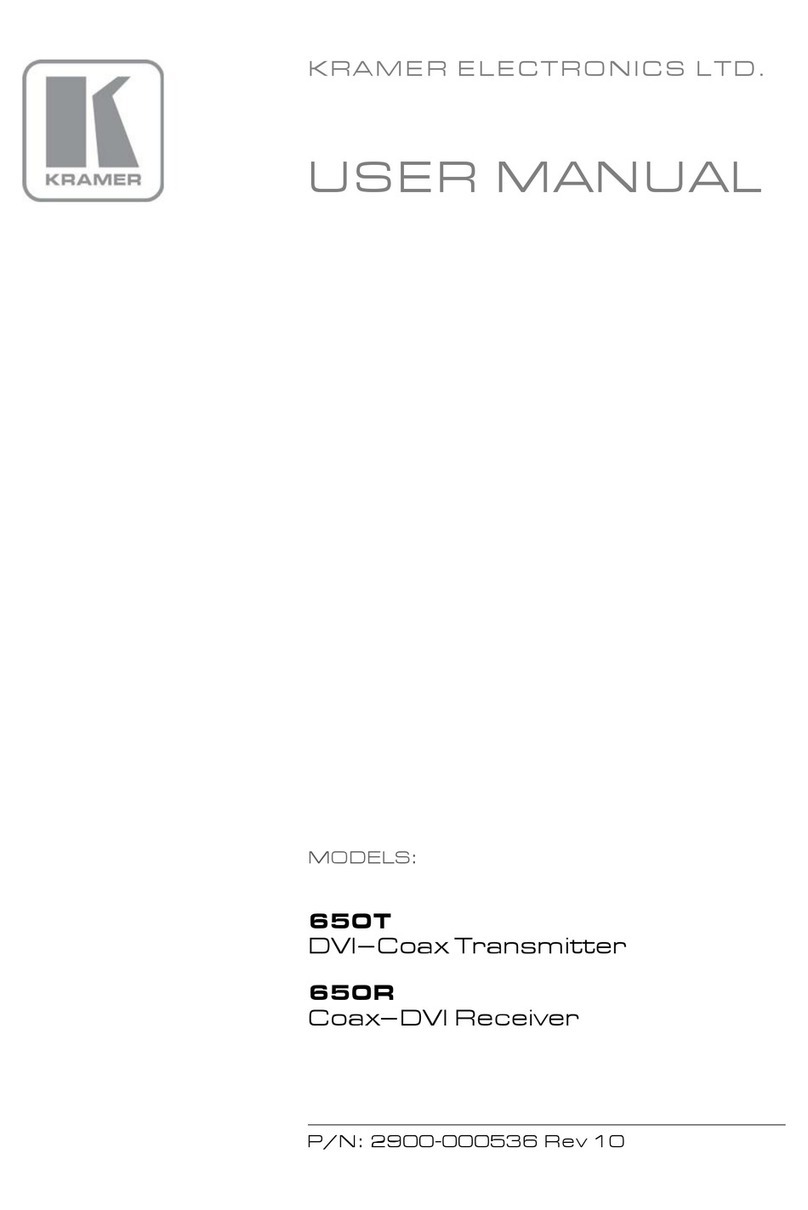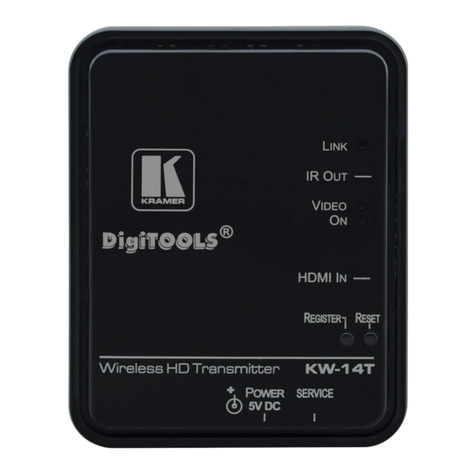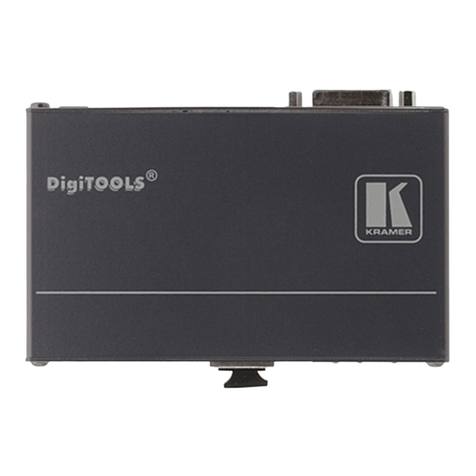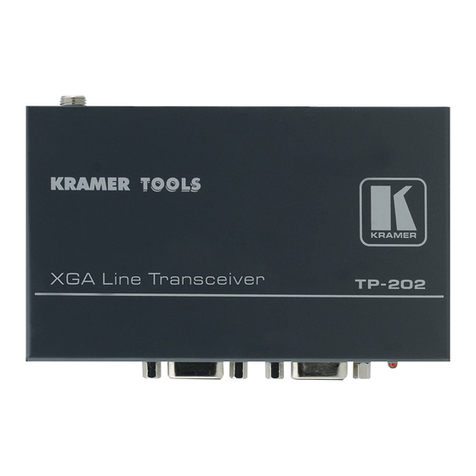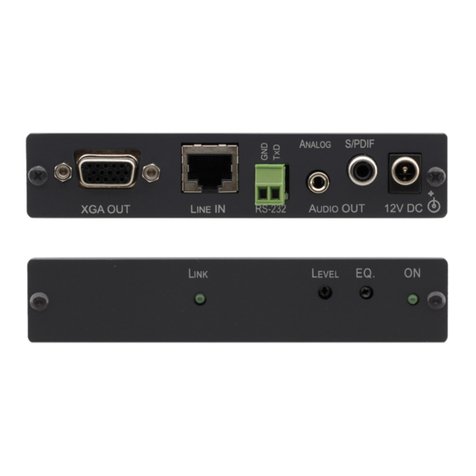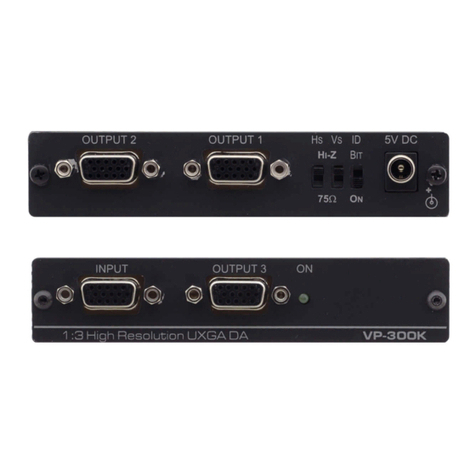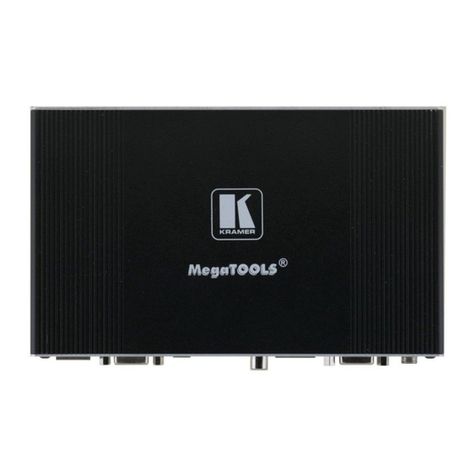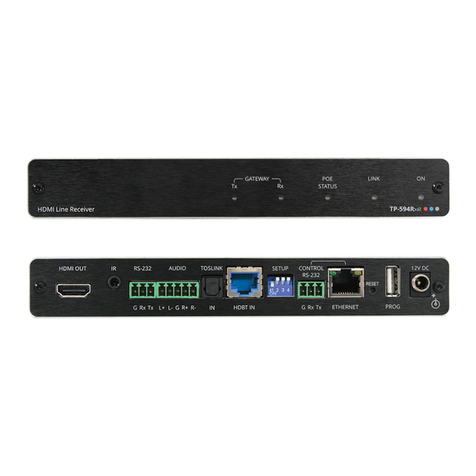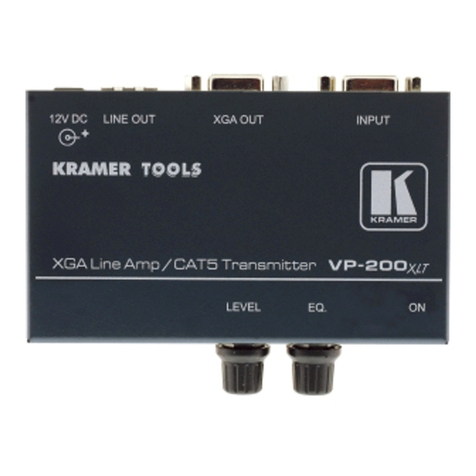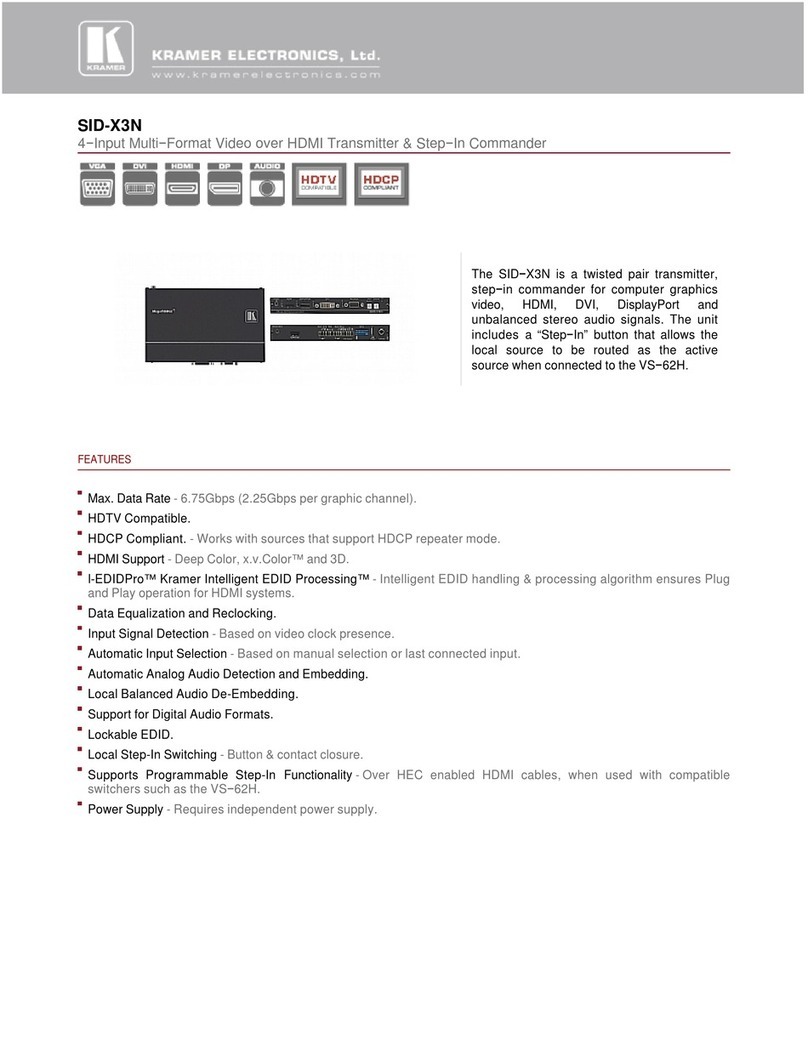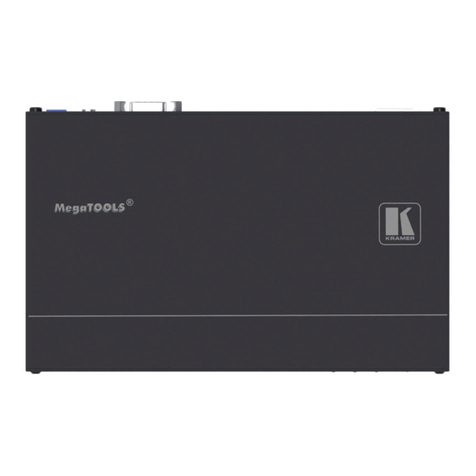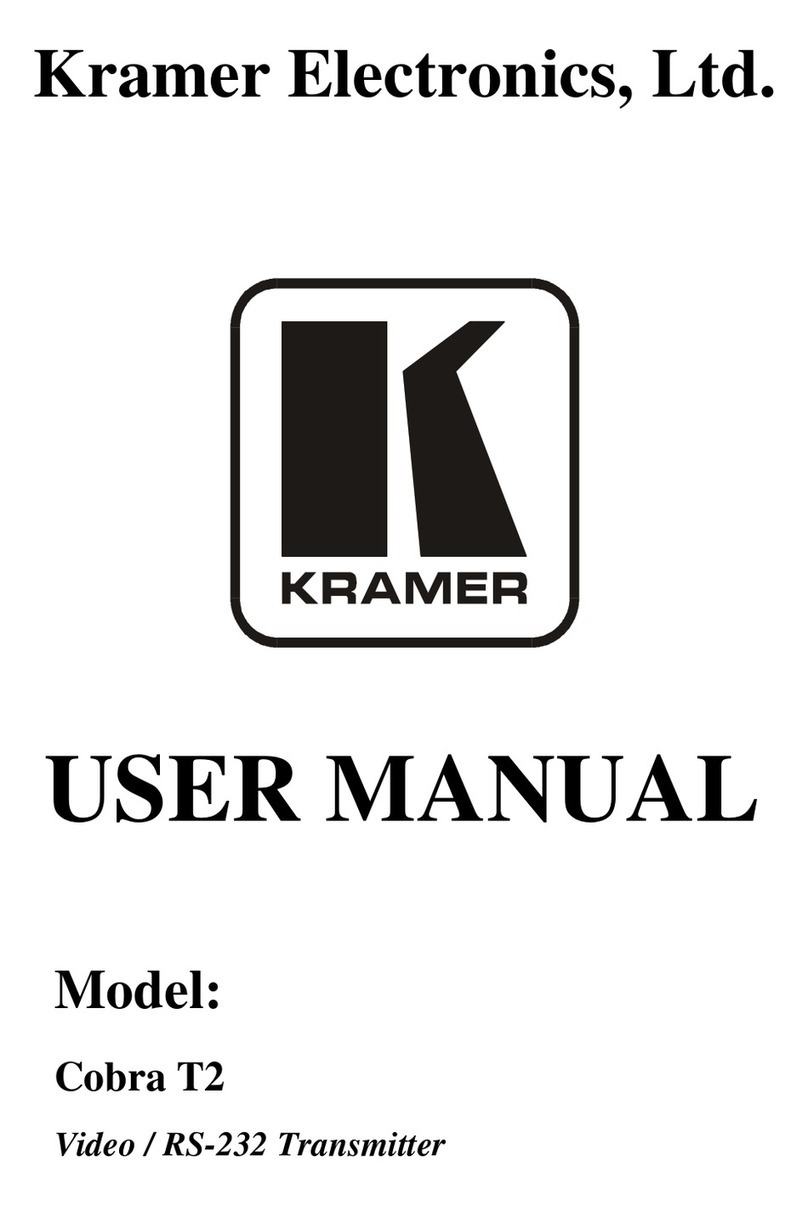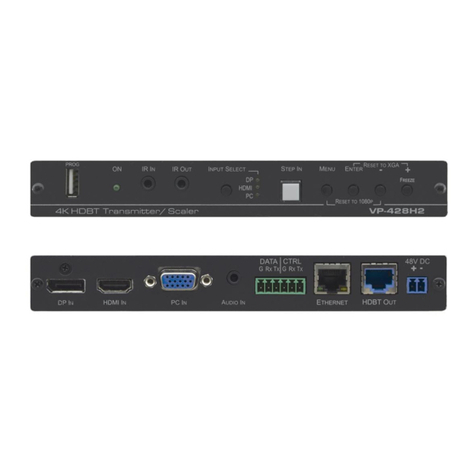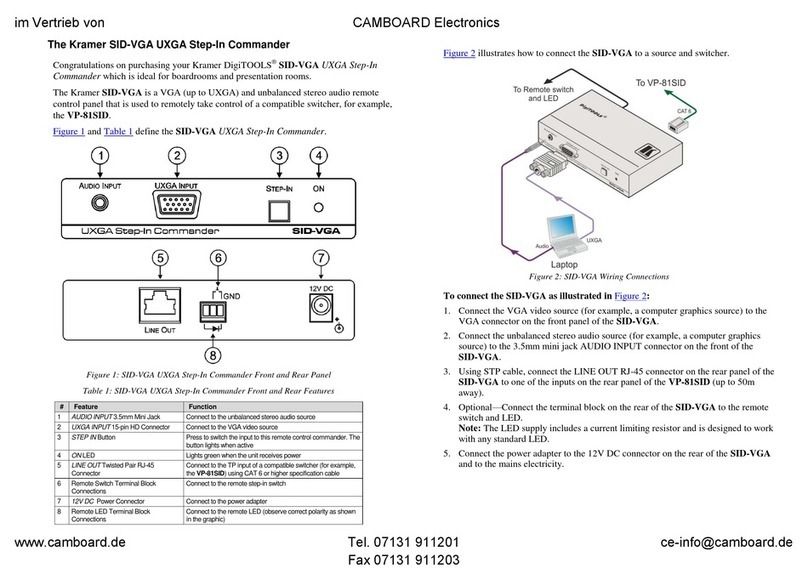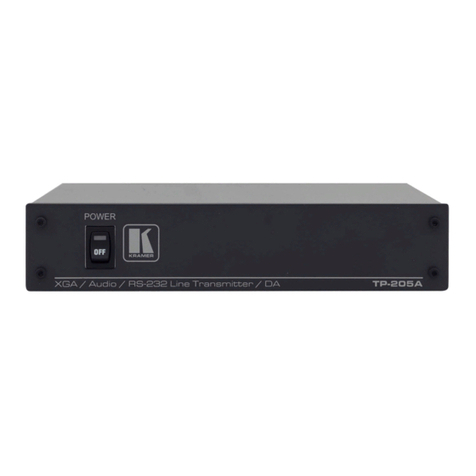
KRAMER ELECTRONICS LTD.
1
INTRODUCTION
Congratulations on your purchase of this Kramer Electronics Twisted Pair equipment. Since 1981
Kramer has been dedicated to the development and manufacture of high quality video/audio
equipment. The Kramer line has become an integral part of many of the best production and
presentation facilities around the world. In recent years Kramer has redesigned and upgraded most of
the line, making the best even better. Kramer’s line of professional video/audio electronics is one of
the most versatile and complete available, and is a true leader in terms of quality, workmanship,
price/performance ratio and innovation. In addition to the Kramer line of high quality Twisted Pair
Interfaces, such as you have just purchased, Kramer also offers a full line of high quality distribution
amplifiers, switchers, processors, interfaces, controllers and computer-related products. This manual
includes configuration, operation and option information for the following products from the Kramer
line of Twisted Pair Interfaces:
TP-15 - Video Line Transmitter
TP-16 - Video Line Receiver
A Word on Twisted Pair Interfaces
Twisted Pair technology significantly simplifies studio and industrial wiring. The price of Twisted
Pair wire is far lower than that of coaxial cables, so it is attractive for many applications. The Twisted
Pair interfaces are divided into three families as follows:
Twisted Pair Transmitters - used to convert video, audio and PC generated VGA/XGA
signals to a twisted-pair signal format (balanced line). The twisted pair transmitters have user-
accessible trimmers or controls for signal level and cable compensation.
Twisted Pair Receivers - used to convert a twisted pair format signal to video, audio or PC
generated VGA/XGA signals. The receivers have looping possibility; so several receivers may
be chained together on one twisted pair wire.
Twisted Pair Amplifiers - used to extend the operating distance of the twisted pair system, by
adding amplification and cable compensation along the twisted pair wire.
Handling Graphics signals
A computer generated graphics signal is usually composed of 5 signals: Red, Green, Blue - which are
analog level signals - and two TTL (logic) level signals - Horizontal Sync and Vertical Sync. (Digital
graphics cards and monitors use a different signal format, and will not be discussed here.) They are
called VGA, S-VGA, XGA, S-XGA and U-XGA, which are terms describing graphics resolution and
color depth. Computer graphics resolution is measured in pixels and signal bandwidth. The more
pixels (picture elements) on the screen, the more detailed the image. Color depth represents the
maximum number of simultaneously displayed colors on the screen and is measured in bits. 24 and
32-36 bits of color depth represent millions to billions of color shades available on the screen at any
given moment. It should be born in mind, though, that the human eye can resolve only a few
thousands colors! The more detailed the image (higher resolution) and the higher the color depth, the
more real the image will look. The highest resolution of standard VGA was 640x480 pixels with 4
bits of color (16 colors). Standard VGA was able to use more colors (256) but at a lower resolution -
around 320x200 pixels - which was very crude. Common resolutions used today for computer
graphics vary between 1024x768 and 2000x1600 pixels with “high color” - 16 bits of color
(representing 64,000 different colors) up to “true color” - 24 bits or more (representing from 16.7
million colors up to several billion.) Displaying such a detailed and colorful image on the screen
needs enormous graphics memory per frame, as well as very high speeds for “writing” so many pixels
on the screen in real time.
Amplifiers that carry such signals must be able to handle those speeds and signal bandwidths.
Standard VGA, at 640x480 resolution, needed amplifiers with 20-30MHz bandwidth. At 1600x1200
or even at 1280x1024 (S-XGA), such amplifiers will fail completely. In order to faithfully amplify
and transmit modern high-resolution graphics, amplifiers with bandwidths of 300 MHz and more are
needed. Those amplifiers, besides the enormous bandwidth they handle, need to be linear, to have
